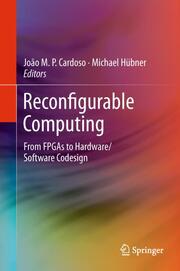Detailansicht
Reconfigurable Computing
From FPGAs to Hardware/Software Codesign
ISBN/EAN: 9781461400608
Umbreit-Nr.: 1766656
Sprache:
Englisch
Umfang: xv, 296 S.
Format in cm:
Einband:
gebundenes Buch
Erschienen am 17.08.2011
Auflage: 1/2011
€ 160,49
(inklusive MwSt.)
Nachfragen
